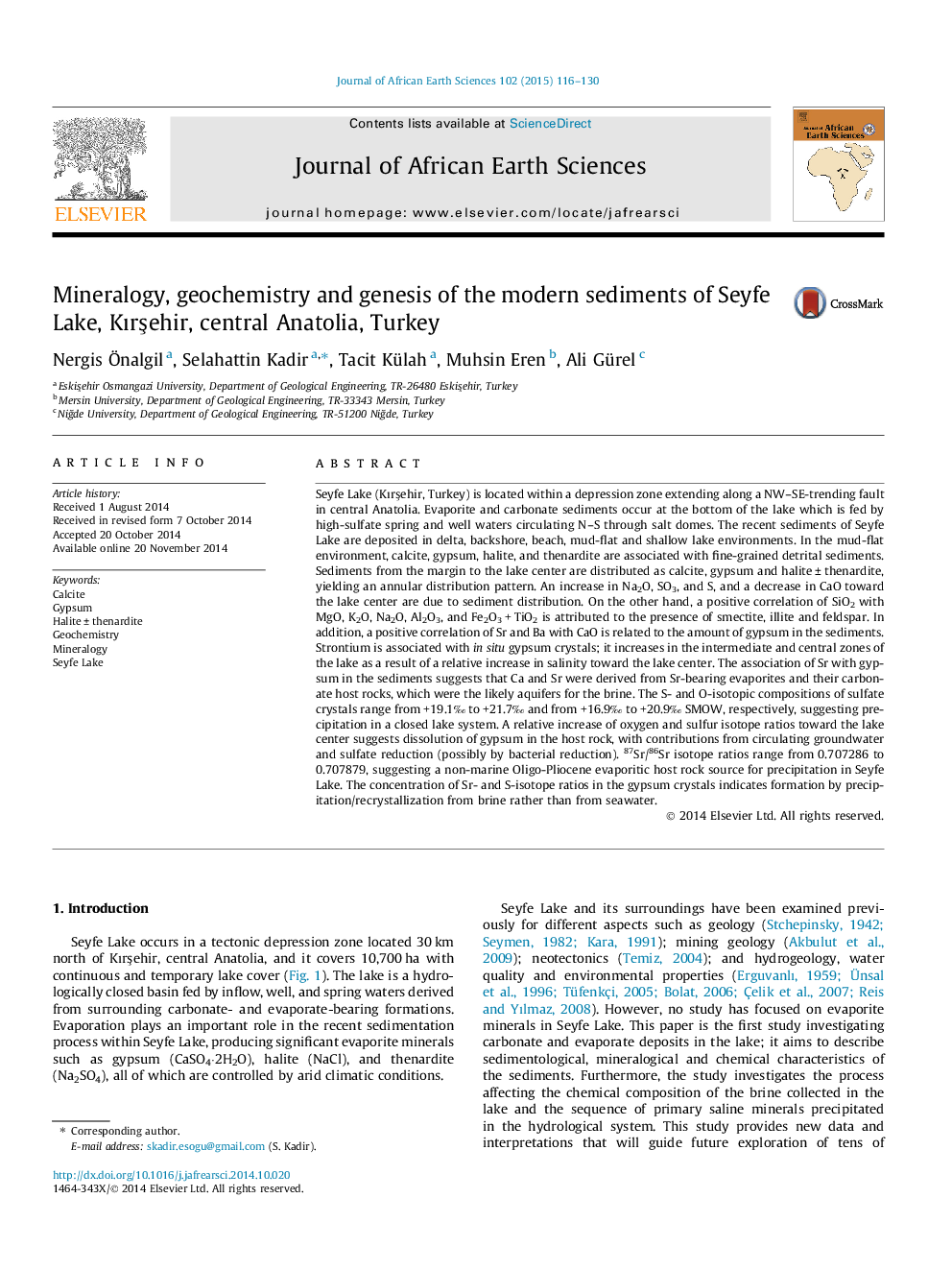| کد مقاله | کد نشریه | سال انتشار | مقاله انگلیسی | نسخه تمام متن |
|---|---|---|---|---|
| 4728616 | 1640205 | 2015 | 15 صفحه PDF | دانلود رایگان |

• This paper investigates the modern sediments (evaporites and carbonates) of Seyfe Lake.
• The lake sediments are characterized by petrography, XRD, SEM-EDX, and geochemistry.
• Depositional conditions of the sediments were interpreted.
• A depositional model was evaluated considering sediment distribution and their mineralogical and chemical compositions.
Seyfe Lake (Kırşehir, Turkey) is located within a depression zone extending along a NW–SE-trending fault in central Anatolia. Evaporite and carbonate sediments occur at the bottom of the lake which is fed by high-sulfate spring and well waters circulating N–S through salt domes. The recent sediments of Seyfe Lake are deposited in delta, backshore, beach, mud-flat and shallow lake environments. In the mud-flat environment, calcite, gypsum, halite, and thenardite are associated with fine-grained detrital sediments. Sediments from the margin to the lake center are distributed as calcite, gypsum and halite ± thenardite, yielding an annular distribution pattern. An increase in Na2O, SO3, and S, and a decrease in CaO toward the lake center are due to sediment distribution. On the other hand, a positive correlation of SiO2 with MgO, K2O, Na2O, Al2O3, and Fe2O3 + TiO2 is attributed to the presence of smectite, illite and feldspar. In addition, a positive correlation of Sr and Ba with CaO is related to the amount of gypsum in the sediments. Strontium is associated with in situ gypsum crystals; it increases in the intermediate and central zones of the lake as a result of a relative increase in salinity toward the lake center. The association of Sr with gypsum in the sediments suggests that Ca and Sr were derived from Sr-bearing evaporites and their carbonate host rocks, which were the likely aquifers for the brine. The S- and O-isotopic compositions of sulfate crystals range from +19.1‰ to +21.7‰ and from +16.9‰ to +20.9‰ SMOW, respectively, suggesting precipitation in a closed lake system. A relative increase of oxygen and sulfur isotope ratios toward the lake center suggests dissolution of gypsum in the host rock, with contributions from circulating groundwater and sulfate reduction (possibly by bacterial reduction). 87Sr/86Sr isotope ratios range from 0.707286 to 0.707879, suggesting a non-marine Oligo-Pliocene evaporitic host rock source for precipitation in Seyfe Lake. The concentration of Sr- and S-isotope ratios in the gypsum crystals indicates formation by precipitation/recrystallization from brine rather than from seawater.
Journal: Journal of African Earth Sciences - Volume 102, February 2015, Pages 116–130